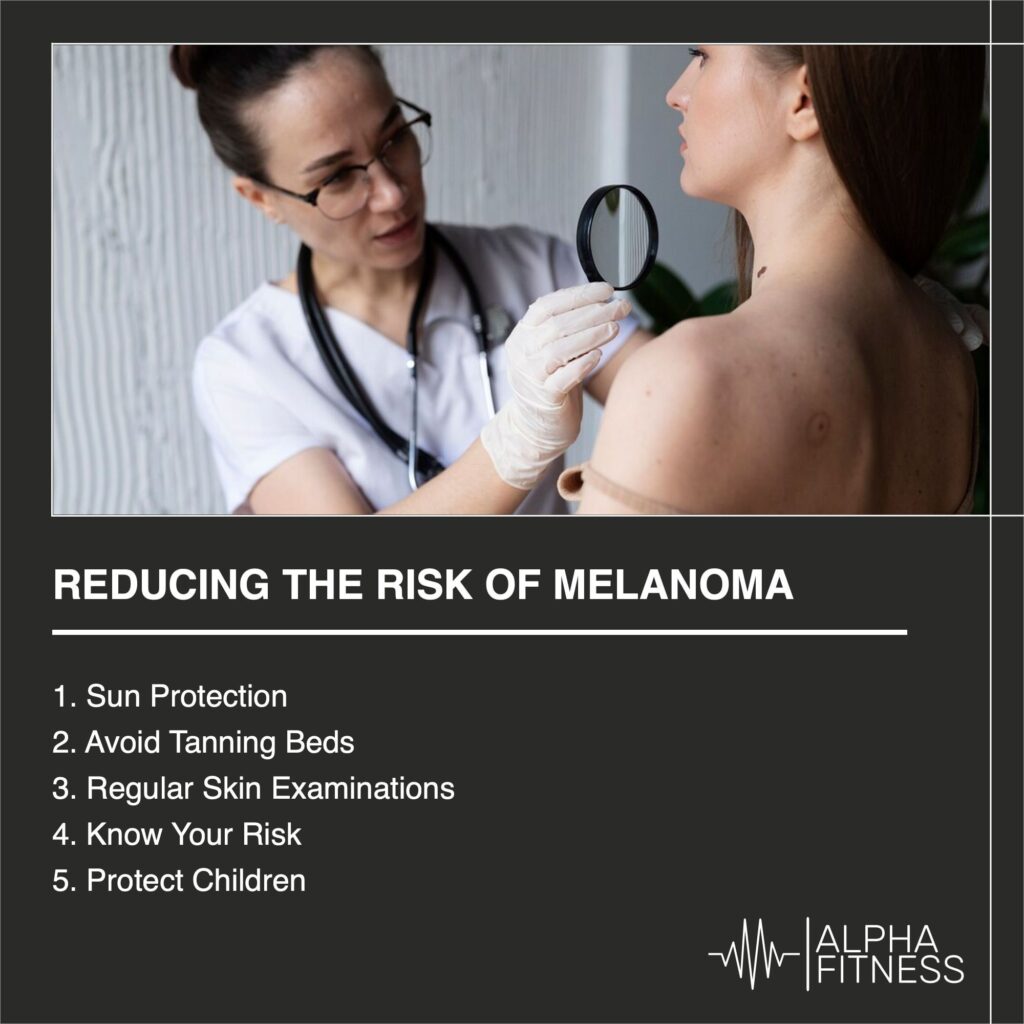
Preventing melanoma, or reducing your risk of developing this type of skin cancer, involves taking measures to protect your skin from excessive sun exposure and other risk factors. Here are some ways to defend against melanoma:
Sun Protection: Protect your skin from the sun’s harmful UV radiation, which is a primary cause of melanoma.
Wear sunscreen with a high SPF (Sun Protection Factor) and apply it generously to all exposed skin, even on cloudy days.
Use broad-spectrum sunscreen that protects against both UVA and UVB rays.
Reapply sunscreen every two hours or more frequently if you’re swimming or sweating.
Seek shade, especially during peak sun hours (10 a.m. to 4 p.m.).
Wear protective clothing, such as long-sleeved shirts, wide-brimmed hats, and sunglasses that block UV rays.
Avoid Tanning Beds: Do not use indoor tanning beds, as they emit high levels of UV radiation and can significantly increase your risk of melanoma.
Regular Skin Examinations: Perform regular self-examinations of your skin to check for any changes in moles, freckles, or other skin irregularities. If you notice any new, changing, or suspicious growths, consult a dermatologist for a professional evaluation.
Know Your Risk: Understand your personal risk factors for melanoma, such as family history, skin type, and any previous history of melanoma, and discuss them with your healthcare provider. This information can help determine the appropriate level of vigilance and preventive measures.
Protect Children: Protect children from sun exposure and sunburns, as they can increase the risk of melanoma later in life. Use sunscreen, protective clothing, and shade for children when they are outdoors.
Regular Checkups: Schedule regular skin checks with a dermatologist, especially if you have a family history of melanoma or other risk factors.
Early Detection: Be aware of the ABCDEs of melanoma, which can help you identify potential warning signs:
A (Asymmetry): One half of the mole is different from the other half.
B (Border): The edges of the mole are irregular or poorly defined.
C (Color): The mole has uneven coloring, with shades of brown, black, or other colors.
D (Diameter): The mole is larger than a pencil eraser (approximately 6 mm or more in diameter).
E (Evolving): The mole is changing in size, shape, or color.
Limit Alcohol and Smoking: Excessive alcohol consumption and smoking have been associated with an increased risk of melanoma. Reducing or quitting these habits can help lower your risk.
Maintain a Healthy Lifestyle: A healthy diet and regular exercise can help support overall well-being and may contribute to a lower risk of cancer, including melanoma.
Below is a list of useful links:
- Asymptomatic weakens body muscles and bones
- Do abdominal crunches to get strong body
- Pneumonia can infect your lungs and airways
- Eat less sugar to get rid of diabetes
- Green, leafy vegetables usually fight dementia
Remember that early detection is key to successful melanoma treatment, so stay vigilant and seek medical attention if you notice any suspicious changes in your skin. If you have concerns about your risk for melanoma or skin health, consult with a healthcare provider or dermatologist for personalized guidance.




you are in reality a just right webmaster The site loading velocity is incredible It seems that you are doing any unique trick In addition The contents are masterwork you have performed a wonderful task on this topic
What I do not understand is how you are not even more well-liked than you currently are. You are exceptionally intelligent and know so much about this subject that it caused me to believe it from a multitude of perspectives. It seems that people are not interested in anything related to Lady Gaga. Your own work is consistently excellent.